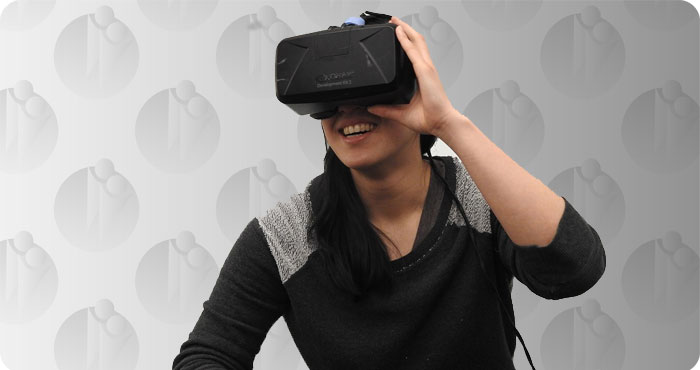Virtual Reality’s Place in Solopreneurial Marketing
This page may contain links to Amazon.com or other sites from which I may receive commission on purchases you make after clicking on such links. Read my full Disclosure Policy

It’s no secret that I welcome guest bloggers here on Your Organizing Business. I’ve written previously about some of the benefits of hosting guest bloggers, but I’ve discovered yet another one: the opportunity to learn something new.
For example, when Hattie James offered to write about Virtual Reality and Marketing, I was concerned that this technology was far too costly for the solopreneurs who read my blog. I soon learned that I was mistaken, as you’ll discover when you read her article.

Unless you’re a large, faceless corporation with an unlimited budget, using virtual or augmented reality for any kind of marketing can seem unrealistic. Big box stores have been using this technology for years to create virtual stores for market research, investing thousands of dollars and hours.
While a virtual store for market research may be the perfect investment for Walmart and its competitors, is there really a return on investment for small businesses and solopreneurs like professional organizers or assistants?
Why Go So Hi-Tech?
Pictures can certainly say a thousand words about a service you provide or a project you’ve completed for a client. However, enhanced customer experience and going mobile were keys to digital marketing in 2015 and continue to be so this year.
Using virtual reality (VR) and augmented, or enhanced, video are two ways to enhance the customer’s experience by bringing a potential client into a completed project through a mobile platform. If you wish to share a project with a client, you can even use YouTube360 to upload VR videos and share them via your social media platforms.
While YouTube360 doesn’t offer the opportunity to create individual channels, you can curate playlists. These playlists can also be shared via social platforms such as Twitter and Facebook. They present you the solopreneur the chance to not just show clients a project or tell them about a service, but bring the client into your work world.
Creating your own experiences is no longer difficult. If you are tech savvy, and most solopreneurs today are, you can download VR cameras and developer apps to help you capture video and create your own immersive experiences.
More Affordable These Days
The fear these days is that virtual reality is too expensive for small businesses. However, companies like Oculus and Google are making VR and augmented reality affordable for small businesses.
Google is now even offering its Cardboard platform to the public. Costing anywhere from $15 to $40, these viewers are a combination of old-school viewfinder and the Samsung Gear VR headset. Create and load video via an app, and you simply plug a smartphone into the viewer.
Made for phones with a screen size up to six inches, they can be used with both Android and iOS powered phones. If you are marketing your services, look to the cheapest option, as it is practically a blank slate for customization.
Perfect for reaching clients at trade shows, it’s your potential clients who bring the technology, and you provide the customized viewer. Paint or decorate your viewers to reflect your brand, stick a QR code on the side for them to download a viewing app, and pass them out to potential clients. Because smartphones are everywhere these days, you could even mail Google Cardboard kits to potential customers, instructions included, for them to assemble and use to view your video marketing.
Still Wary?
If you’re still wary of using VR and augmented reality in marketing your services, simply start testing out opportunities. Many of the business experts interviewed by TechRadar about the transformative powers of VR pointed out that the best way to learn how to use VR for your business is to experience it yourself.
Find other like-minded business owners who are already using VR and augmented reality. These early adopters have likely worked out some kinks in the process of using VR for their business. They have also likely developed innovative best practices for bringing their products and services to their target markets through affordable VR means.





Interesting topic. I didn’t think of applying VR to small business either. I figured it was a gaming option but there could be some opportunities for organizers to do a before and after gallery of photos if they have 360 degree photos for home show goers experience. Now that would be cool. My husband is in the software industry and goes to trade shows all the time and hasn’t seen VR applied yet as a marketing tactic. I feel like we are seeing the really early stages of this tech. Thanks for sharing.
Thanks for your feedback, especially what your husband has seen at trade shows. It’s helpful to have an insider’s view.
I was like Sabrina, I thought it was a technology only used by gamers, interesting concept. However with my love/hate relationship with technology I don’t think I will be applying this is to my marketing anytime soon.
Thanks for your honesty, Jill!
I had never thought about this before….interesting. If I could just get over my “issues” with seeing myself in videos I might be willing to take a go at this. Definitely something to store in the idea bank. Thanks for sharing Janet!
I hate seeing myself in videos too, but it seems to be something we’re going to have to get over, what with Blab, Periscope, Facebook Live Videos, etc.!
When I wrote about this topic, it wasn’t even with the intent of seeing oneself in the videos at all but of showcasing the work that is being done. You get to be the one behind the camera. You might be doing the narration or creating the text explaining the work, but if you don’t want to be in the video, you certainly don’t have to. The beauty of VR and immersive video is that it speaks for itself.
Thanks for the clarification – that makes a lot of sense!
Great topic, I think that the VR has to be imported in the marketing after few years. This tech is not advanced, after few years, I`m sure that it will be amazing with great features. For me is too soon, but I see the future in it 🙂
There is definitelly future in that technology. For sure. I am sure that it would be involved and go viral.
It would definitely help you stand out from competitors who weren’t using it!